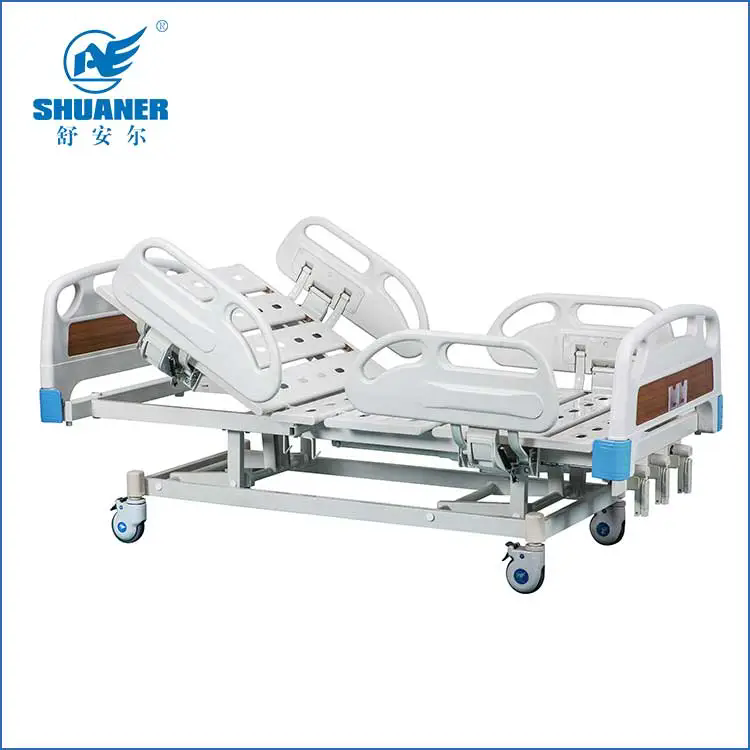The Essential Guide to Manual Hospital Beds: Comfort and Functionality for Patient Care
2024-10-12
In the realm of healthcare, ensuring the comfort and safety of patients is paramount. One of the most critical pieces of equipment in any hospital, nursing home, or home healthcare setting is the manual hospital bed. These beds are designed to provide optimal support and comfort for patients while allowing healthcare professionals to deliver effective care. In this blog, we’ll explore the features, benefits, and considerations of manual hospital beds, highlighting their importance in patient care.
What is a Manual Hospital Bed?
A manual hospital bed is a versatile, adjustable bed designed specifically for patients in need of medical care. Unlike electric hospital beds, which use a motor for adjustments, manual hospital beds require the caregiver or patient to adjust them using hand-operated mechanisms. These beds typically come with various features, including adjustable head and foot sections, height adjustments, and locking wheels for stability.
Key Features of Manual Hospital Beds
Manual hospital beds are equipped with several features that enhance patient comfort and caregiver efficiency:
1. Adjustable Positions: The primary feature of a manual hospital bed is its ability to adjust the head and foot sections. Caregivers can easily raise or lower these sections using hand cranks, allowing patients to find a comfortable position. This adjustability is crucial for patients who need to sit up for meals, receive treatment, or alleviate pressure on certain body parts.
2. Height Adjustability: Many manual hospital beds offer height adjustments to accommodate various patient needs. Adjusting the height can facilitate easier transfers for caregivers and allow patients to enter or exit the bed safely.
3. Sturdy Construction: Manual hospital beds are designed for durability, often constructed from high-quality materials that can withstand frequent use. The robust frame ensures stability, providing a safe environment for patients.
4. Locking Casters: These beds typically come with locking wheels, allowing for easy mobility when needed. Caregivers can move the bed for cleaning or to reposition it in a room, and the locking mechanism ensures that the bed remains stationary during patient care.
5. Side Rails: Many manual hospital beds are equipped with adjustable side rails that enhance patient safety. These rails can prevent falls and provide support for patients when getting in and out of bed.
Benefits of Manual Hospital Beds
Investing in a manual hospital bed offers several advantages for both patients and caregivers:
1. Cost-Effective: Manual hospital beds are generally more affordable than their electric counterparts. This makes them an attractive option for home care settings or facilities with budget constraints.
2. Simplicity and Reliability: With fewer mechanical parts, manual beds are less likely to malfunction compared to electric beds. This reliability is especially important in critical care settings where patient safety is a priority.
3. User-Friendly: Manual hospital beds are straightforward to operate, making them accessible for caregivers and patients alike. The hand-crank mechanisms are easy to use, even for those with limited strength.
4. Versatility: These beds can be used in various settings, including hospitals, nursing homes, and home care environments. Their adjustability and sturdy construction make them suitable for a wide range of patient needs.
5. Enhancing Patient Comfort: The ability to customize the bed’s position allows for better comfort and support, which can significantly improve patient satisfaction and well-being.
Considerations When Choosing a Manual Hospital Bed
When selecting a manual hospital bed, there are several factors to consider:
1. Patient Needs: Assess the specific needs of the patient. Consider their mobility, medical conditions, and preferences for bed height and position adjustments.
2. Room Size: Ensure that the bed will fit comfortably in the designated space. Measure the room and consider the bed’s dimensions, including the space needed for adjustments and caregiver access.
3. Material and Construction: Look for a bed made from high-quality materials that can withstand daily use. A sturdy frame and durable mattress support are essential for patient safety and comfort.
4. Weight Capacity: Check the weight capacity of the manual hospital bed to ensure it can safely accommodate the patient’s weight. This is crucial for preventing structural failures and ensuring patient safety.
5. Budget: Determine your budget and compare options within that range. While manual hospital beds are typically more affordable, prices can vary based on features and construction quality.
Maintenance and Care of Manual Hospital Beds
Proper maintenance is essential to ensure the longevity and functionality of manual hospital beds:
- Regular Inspections: Periodically inspect the bed for any signs of wear or damage. Check the hand-crank mechanisms, side rails, and overall stability.
- Cleaning: Keep the bed clean to maintain a hygienic environment. Use appropriate cleaning solutions that are safe for the bed’s materials.
- Lubrication: If applicable, lubricate the moving parts, such as hinges and cranks, to ensure smooth operation.
Conclusion
Manual hospital beds are a vital component of patient care, providing comfort, support, and functionality in various healthcare settings. Their affordability, reliability, and ease of use make them an ideal choice for hospitals, nursing homes, and home healthcare environments. By understanding the features and benefits of manual hospital beds, caregivers and patients can make informed decisions that enhance the overall quality of care.
Investing in the right manual hospital bed can significantly impact a patient’s comfort and recovery. As you consider your options, keep in mind the specific needs of the patient, the available space, and the overall budget. With the right choice, a manual hospital bed can become an essential tool in providing compassionate and effective care.



